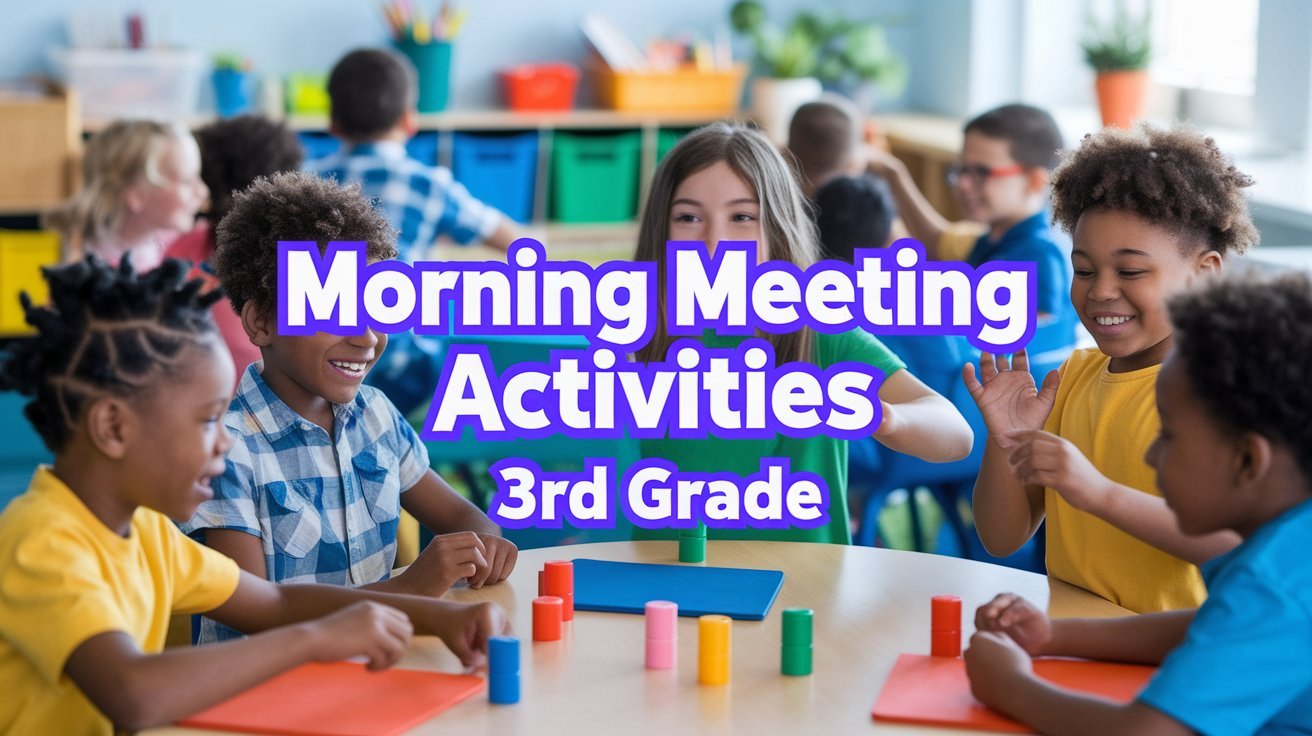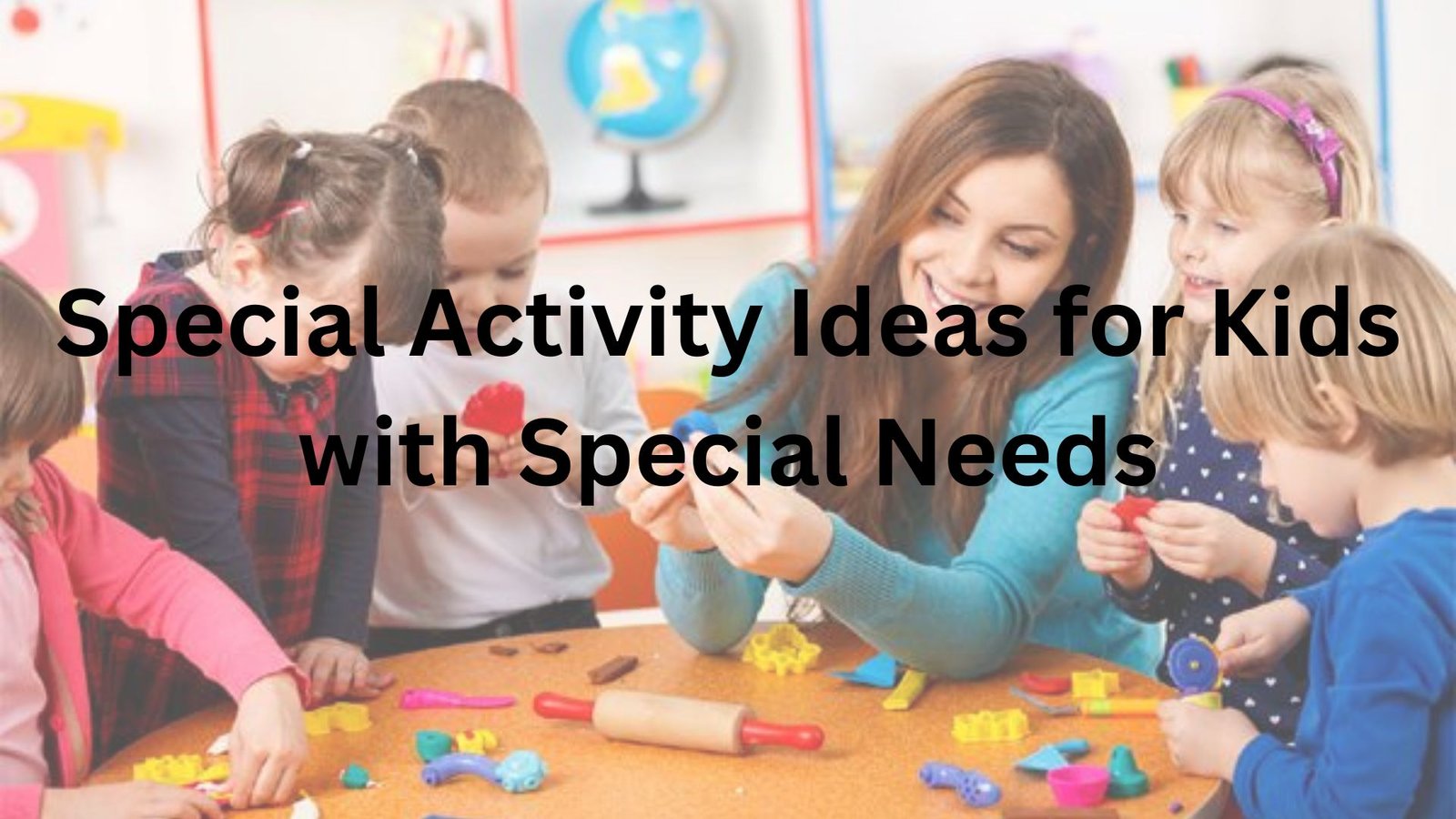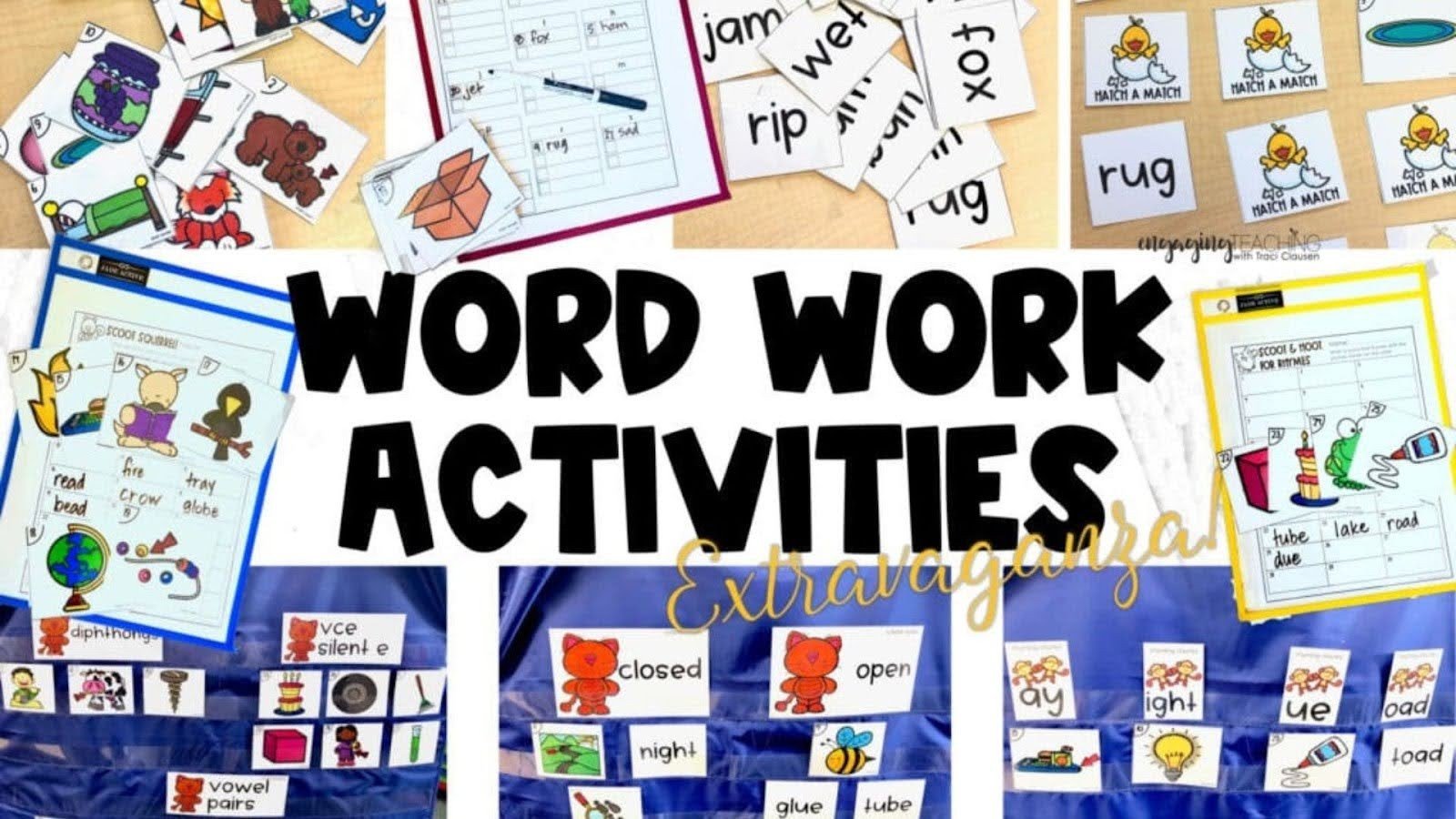Morning meetings unite your upper elementary students before the start of the academic day. Social skills are taught at these daily gatherings that foster community, so young minds are encouraged to wake up for future learning.
Your choices in activities make all of difference. Eight and nine-year-olds need, beyond circle time, engaging challenges. The challenges must match their growing independence, in addition to their energy levels.
In this guide, proven morning meeting activities fo3rd-gradede teachers are shared. Each activity takes about 5 to 10 minutes. It is minimal preparation that each activity requires. Find step-by-step instructions and tips for the purpose of avoiding common problems, along with modifications intended for different learners.
Morning Meeting Activities for 3rd Grade
These activities work because they match how 3rd graders learn best through movement, collaboration, and friendly competition that keeps everyone included.
Rock Paper Scissors Tournament

Partner students up around the room. Each pair plays rock-paper-scissors once. Winners move on to face other winners, while everyone who loses becomes a cheerleader for their victor. The game continues until only two students remain for the championship round.
Third graders love the competitive element, but stay engaged even after elimination. Everyone participates through cheering, and no special skills are required. The game takes just three to four minutes from start to finish.
Start by teaching clear hand signals and practicing one round where everyone plays simultaneously. Make sure students understand that being a cheerleader is just as important as competing.
Reverse Charades

Split your class into two teams. One team acts out a word or phrase together while one person from the other team guesses. Set a timer for 60 seconds per round. The whole team mimes at once, which creates hilarious moments as students coordinate their movements without talking.
Shy students feel safer acting in a group rather than alone. This morning meeting activitie3rd-gradede option gets everyone moving while building teamwork. Every student contributes to their team’s performance, so no one sits out.
Write age-appropriate words on index cards beforehand: animals, actions, or simple objects work best. Start with easier words like “brushing teeth” or “elephant” until students understand the format.
Recreate the Art
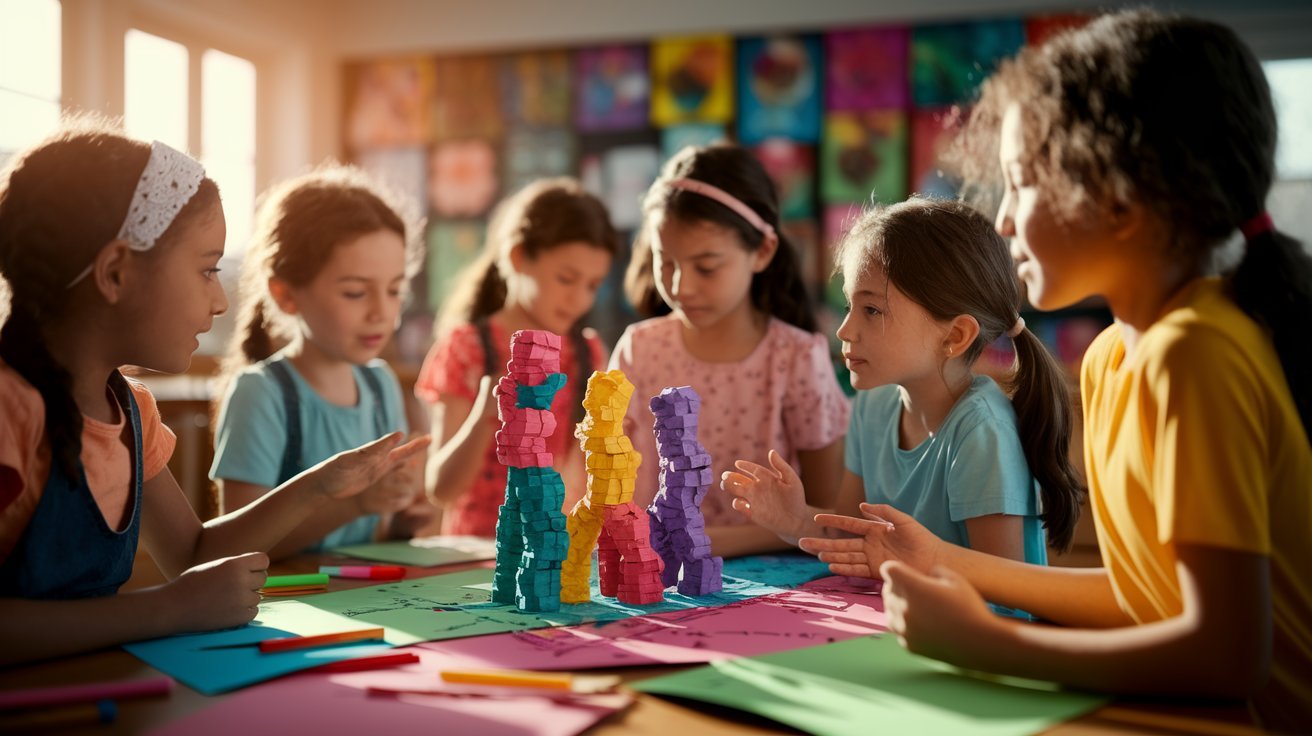
Display a simple famous painting or sculpture for 30 seconds. Students study it carefully, and then the image disappears. Small groups of four or five students work together to recreate what they remember using paper, markers, or their bodies as a tableau.
Students must discuss what they remember and decide how to show it. This builds communication skills as third graders negotiate whose memory is accurate. Groups compare their recreations with the original, which always generates laughs and discussion.
Choose clear images with distinct shapes and colors. Works like Mondrian’s geometric paintings or simple still-life pieces work perfectly. You can find kid-friendly famous artwork through a quick online search and project it on your board.
Find Four Connections
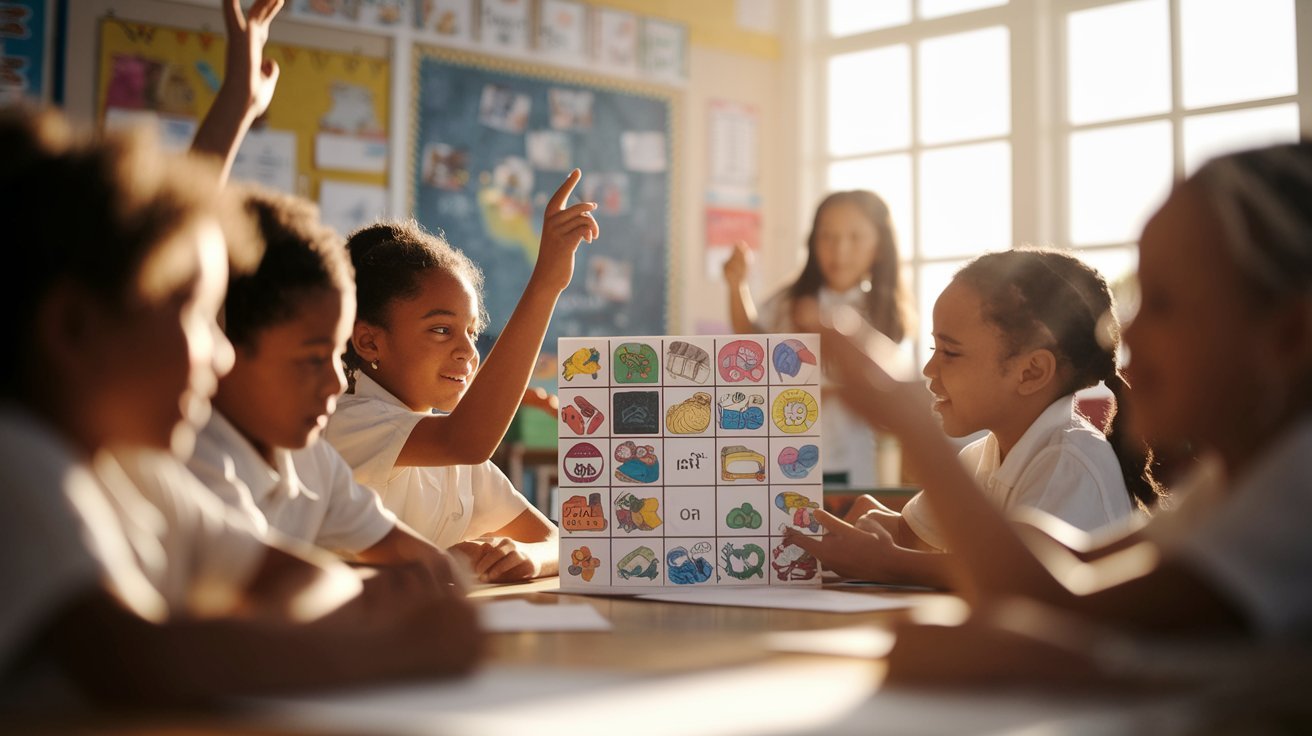
Present 16 words or pictures arranged in a grid. Students work as a class or in small groups to find four items that connect. Maybe four are animals, four are foods, four are red things, or four contain the letter ‘T’.
For students just learning this morning, meeting activity, 3rd-grade game, use obvious categories with pictures. As they improve, introduce trickier connections where items might fit multiple categories.
Write words on your whiteboard or use premade slide templates. Give students thinking time before accepting answers. When someone suggests a connection, ask them to explain their reasoning before revealing if they’re correct.
Spot the Difference
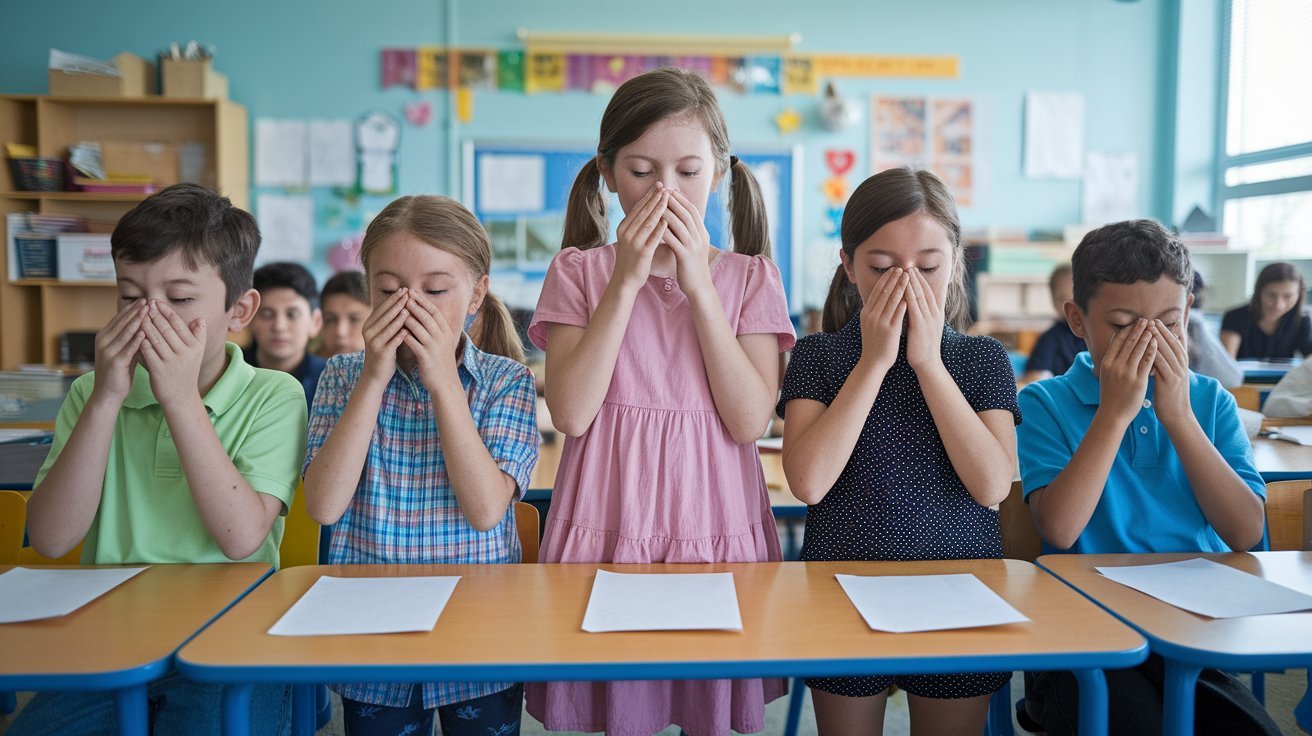
Have five students stand in front of the class. Everyone else studies them for 20 seconds, noting their clothing, poses, and positions. The observers close their eyes while the five students change one thing and swap places.
Third graders excel at noticing details, making this activity perfect for their developmental stage. The game improves concentration while giving selected students a chance to be center stage. It’s especially useful for building observational skills that support reading comprehension.
Instead of people, arrange objects on a table and remove one. Create a scene with classroom items and change something about it. For an extra challenge, change two or three things simultaneously.
Heads or Tails
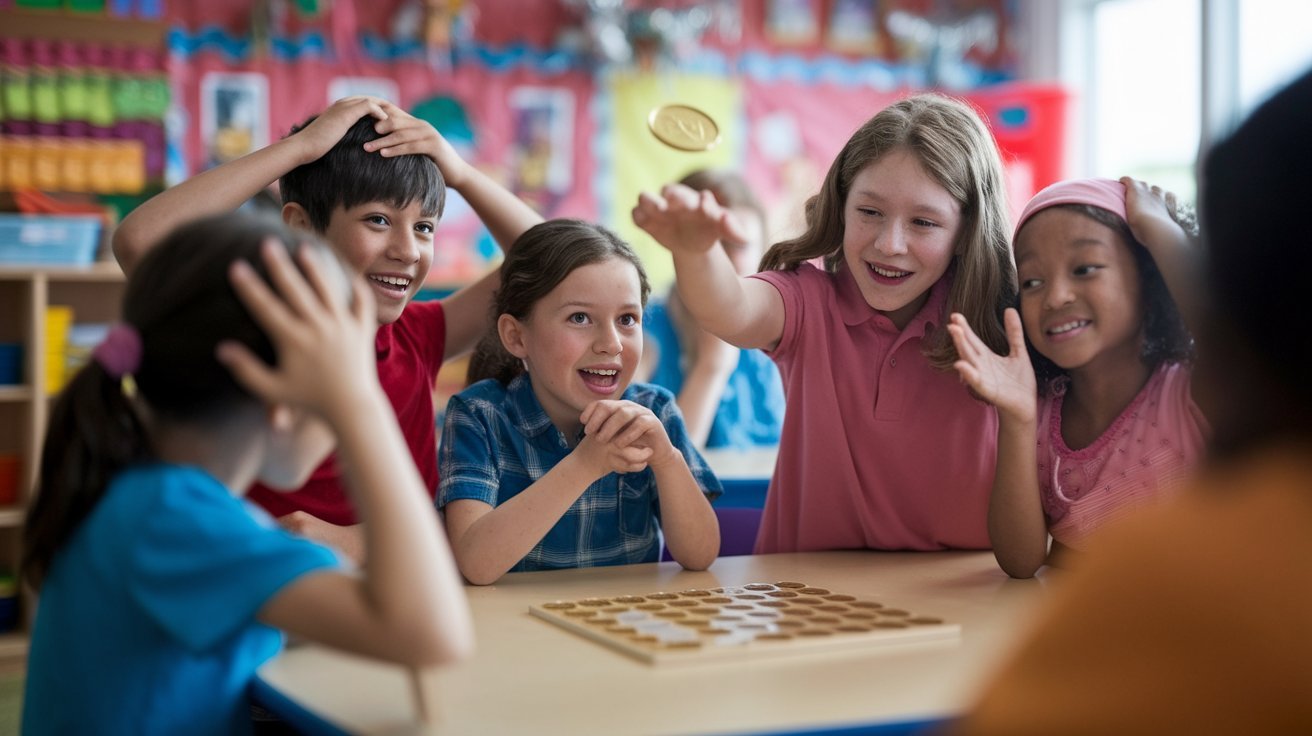
Every student stands and chooses heads or tails by placing their hands on their head or behind their back. Flip a coin (real or digital) and announce the result. Students who guessed correctly stay standing; others sit down.
This morning meeting activities 3rd grade game takes three minutes maximum, but gets everyone moving. There’s no skill involved, just luck, which means every student has equal chances.
Use this game to introduce basic probability concepts. After playing several times, discuss whether heads or tails wins more often. Students start recognizing that past flips don’t predict future results.
Do What Was Said
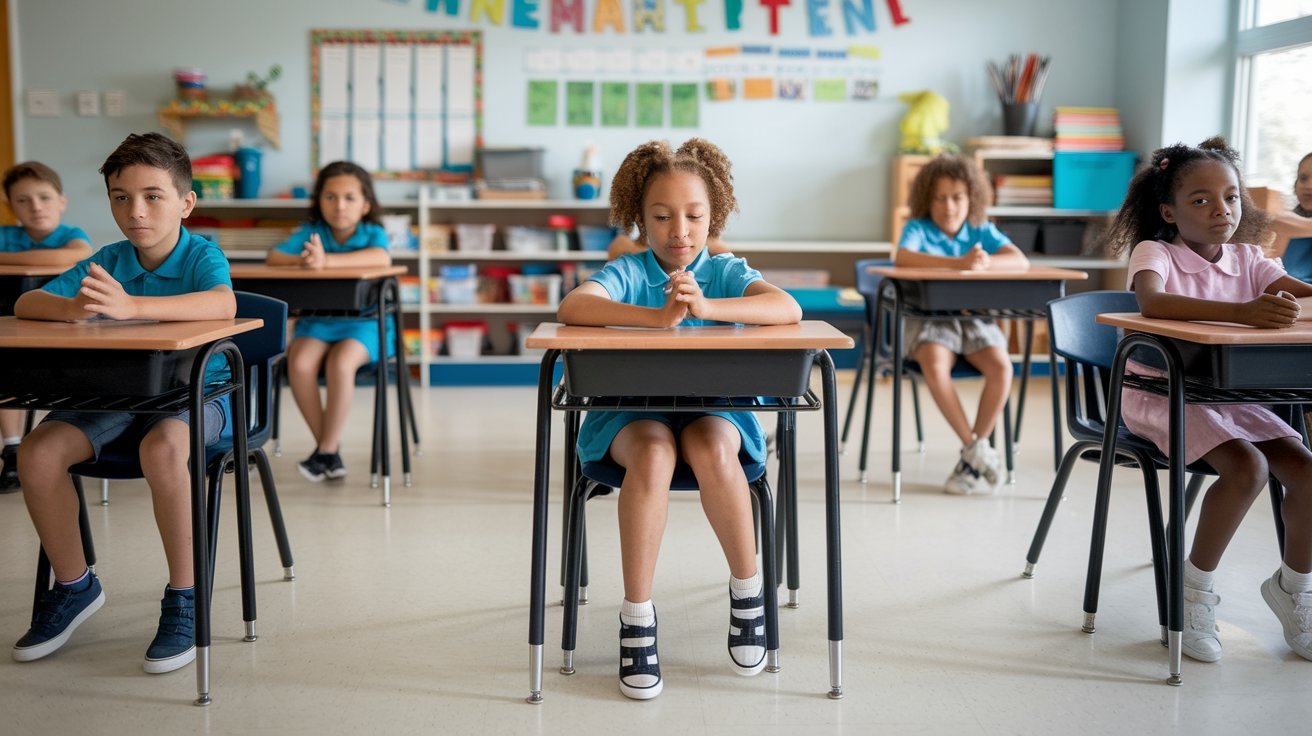
Give students a sequence of actions to perform: “Touch your toes, spin around, clap three times, and sit down.” Start with two actions, then gradually add more. Students must remember and perform actions in the correct order.
This activity engagingly teaches focused attention. Third graders must listen actively rather than just hear words. The game provides immediate feedback they know right away if they remembered correctly.
Begin with simple physical actions everyone knows. Add unusual movements like “touch your left elbow with your right hand” as students improve. Include academic content: “Name two adjectives, spell ‘friend,’ and count backwards from 10.”
Alphablitz

Announce a category and a letter. Teams race to list items in that category starting with that letter within 60 seconds. For example, “animals that start with B” might generate bear, bee, butterfly, buffalo.
This morning, meeting activities 3rd-grade option builds vocabulary while moving quickly. Students can’t overthink; they must respond with whatever comes to mind. The time pressure adds excitement as teams frantically call out words before the timer beeps.
Try categories that match your curriculum: states, math terms, story characters, or science vocabulary. Seasonal categories work too things at the beach, winter words, or items in a garden.
Word Associations
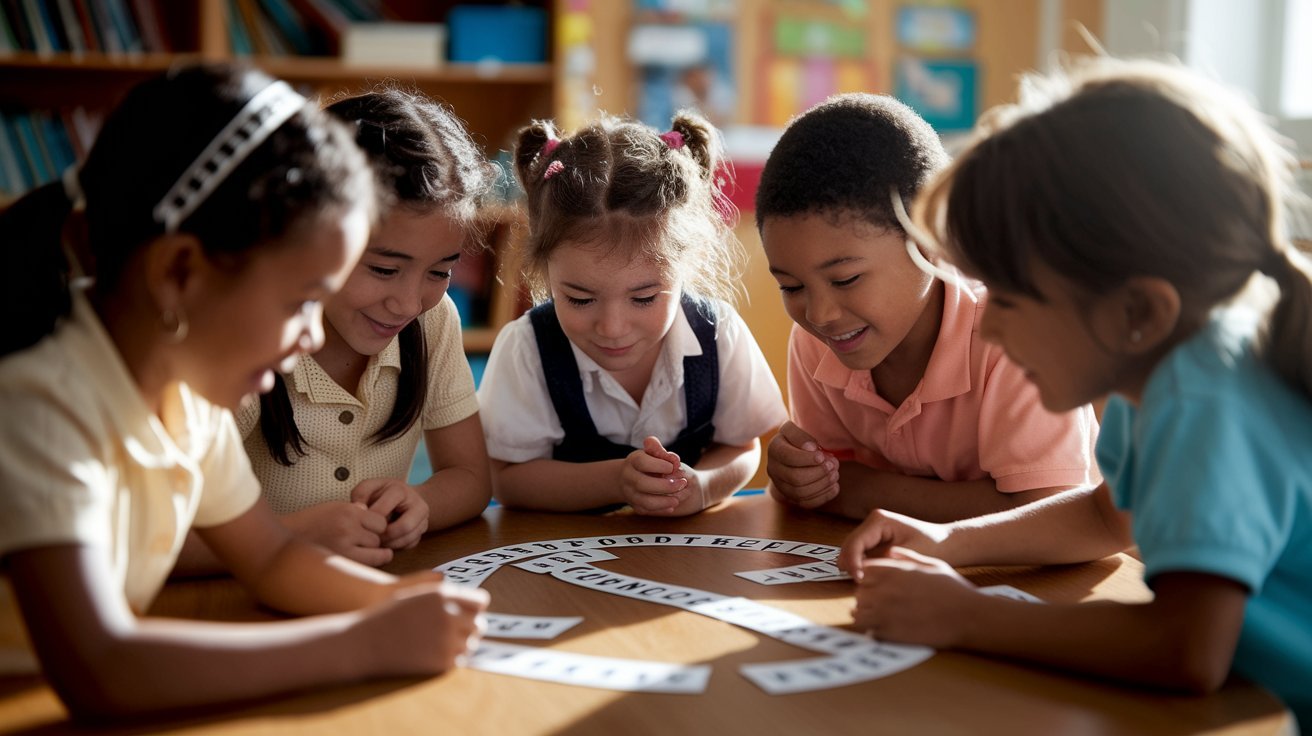
Sit in a circle and choose a starting word like “summer.” The next person says a word connected to the previous word: “beach.” Continue around: “sand,” “castle,” “king,” “crown,” and so on. If someone takes too long or repeats a word, start a new chain.
Students must make mental connections quickly. This builds flexible thinking as they link concepts in unexpected ways. Discussions about unusual connections, like someone connecting “beach” to “homework”
Play with a three-second response time for more challenge. Allow or disallow opposite words depending on your group. Some teachers eliminate students who hesitate, while others keep everyone in and just restart the chain when it breaks.
Yes, And…
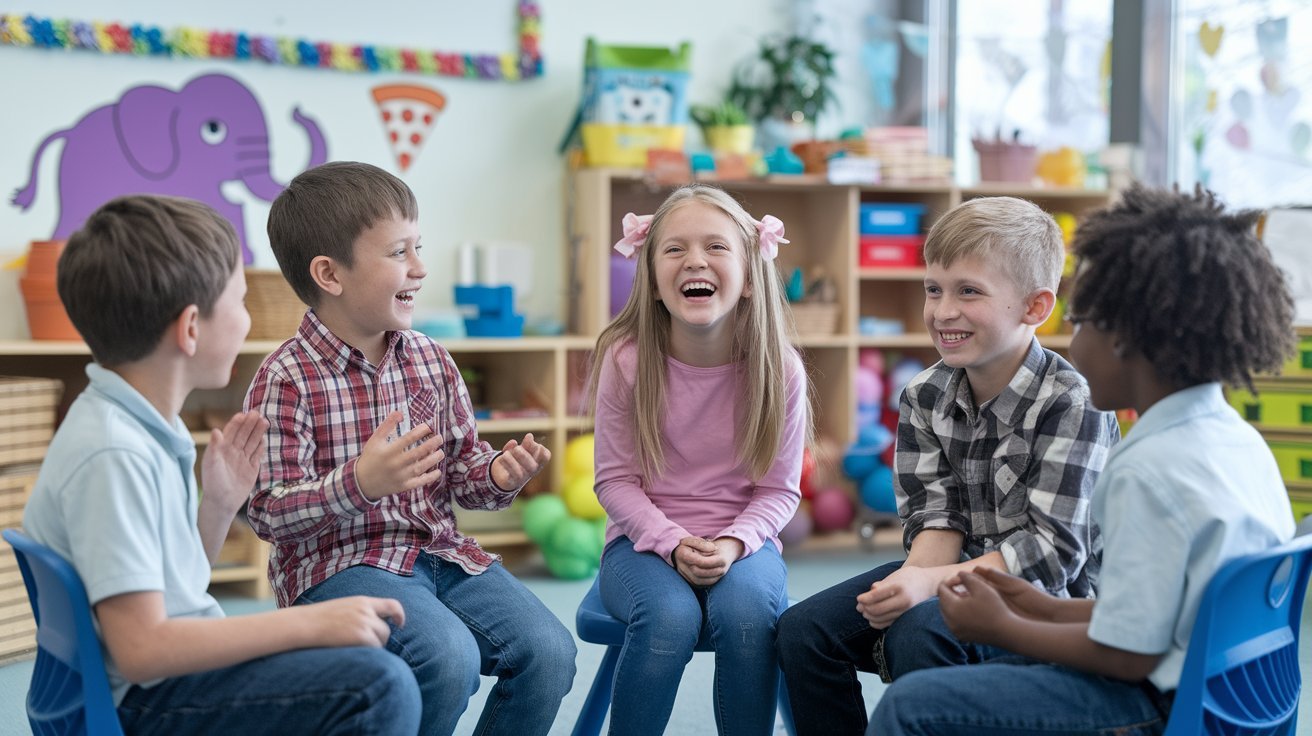
One student starts a story with a single sentence: “I went to the moon and saw a purple elephant.” The next student must accept that idea and add to it: “Yes, and the purple elephant was eating pizza.”
This improv game teaches students to listen and accept others’ ideas rather than shutting them down. Third graders often want to control stories, but this format requires cooperation. The stories become hilariously absurd, which students love.
Model the difference between “Yes, and…” and “No, but…” Show how “No, but…” stops the story while “Yes, and…” keeps it moving. Start with familiar settings like school or the playground before attempting fantasy scenarios.
Morning Meeting Journaling

Provide each student with a small notebook or journal for quick, 5-minute writing prompts. Ask questions like, “What made you smile yesterday?” or “One thing you’re curious about today.” This gives students a calm way to start the day while reflecting on their thoughts and feelings.
Journaling is especially helpful for students who need a quieter activity after high-energy games. You can personalize prompts based on what you notice about your class if a student struggled with teamwork yesterday.
After a few minutes, invite volunteers to share their ideas. Even if not everyone speaks, this builds community and models respectful listening. Journaling also gives you insight into each child’s mindset.
Tips for Successful 3rd Grade Morning Meeting Activities
Practical strategies to make your morning meetings run smoothly and keep all students engaged.
- Limit each activity to 5–10 minutes to maintain focus and energy.
- Even simple games benefit from having props or cards ready beforehand.
- Explain rules and participation roles before starting to prevent confusion.
- Incorporate physical actions to burn off excess energy and boost attention.
- Have students cheer, clap, or acknowledge peers to foster community.
- Offer modified roles or options so every student can participate comfortably.
- Change activities every few days to keep things fresh and engaging.
- Tie games to vocabulary, math, or observation skills for meaningful learning.
- Spend 1–2 minutes discussing what students enjoyed or learned to reinforce growth.
CONCLUSION
These ten activities work since eight and nine-year-olds learn well this way. Movement games burn energy for confident people. Minds that do grow do love to think of games. Cooperation and communication are taught through collaborative activities.
No complex planning or any expensive materials are necessary at all. Rock, Paper, Scissors needs just hands. Only your voice is what is needed by Word Associations. Basic classroom materials allow use with activities using supplies.
This week, you can begin with just one or two activities. Note the student feedback provided by them. As you build confidence along with routines, add new games gradually. Classrooms convert from morning meetings through changes when implementation is consistent, not perfect.
FREQUENTLY ASKED QUESTIONS
How long should morning meeting activities for 3rd grade last?
Most morning meeting activities should take between 5-10 minutes. This timing keeps students engaged without cutting into instruction time. Quick games like Heads or Tails work well in 3-5 minutes, while more complex activities need the full 10 minutes.
What if students don’t want to participate in morning meetings?
Make participation inviting but flexible. Allow shy students to observe initially until they feel comfortable joining. Offer different roles, some students prefer timing games rather than playing.
How do I stop morning meetings from becoming chaotic?
Establish clear expectations before starting any activity. Practice transitions and signals for quiet attention. Set specific volume levels and movement boundaries. If chaos occurs, pause the game and reset expectations calmly.
Can morning meeting activities teach academic content?
Absolutely. Alphablitz builds vocabulary and phonics skills. Find Four Connections develops categorization used in science and math. Word Associations strengthen semantic connections that improve reading comprehension.
How often should I rotate morning meeting activities?
Change activities every 2-3 days to maintain freshness while allowing students to master each game. Repeat favorite activities weekly or biweekly so students develop skill and confidence. Introduce one new activity every two weeks.

